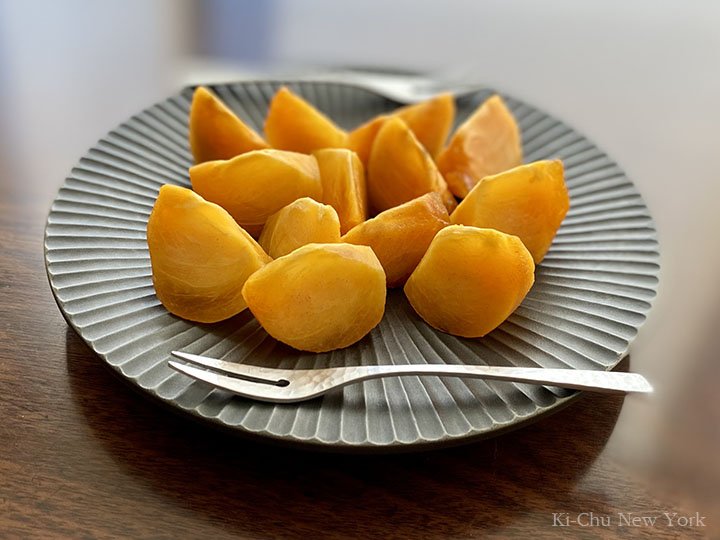Dear friends,
Persimmon is a symbol of autumn. It reminds me of a famous Haiku poem by Shiki Masaoaka (1867 - 1902), “When I eat persimmons the bells of Horyu-ji Temple ring.”
When I first learned this haiku at school, I could clearly see the silhouette of the five-storied pagoda of Horyu-ji Temple*(法隆寺) in Nara against the beautiful autumn sky. Autumn makes me want to visit the Nara temples described in the poem. Horyuji Temple, built in the 7th Century, is one of the ancient temples in Japan and is famous as the oldest existing wooden structure in the world. It is amazing that this wooden structure has survived for over 1300 years.
Several years ago I visited Nara and spent the night at an accommodation owned by an art school. It was an old private house located just behind Todai-ji Temple **(東大寺), another ancient temple in Nara, which is famous for the Great Buddha. I had heard that a Buddhist restorer lived in that house, and donated it to the art school; so that students and alumni could visit Nara and study Japanese art and antiquities. There is a persimmon tree in the courtyard of the house. I asked permission from the manager of the house to pick a persimmon and while I ate it I was thinking of the haiku. This was a remarkable experience. Since then, whenever I eat persimmons, I am reminded of the old temples in Nara.
Finally, the Japanese government is allowing travel to Japan, and because the yen is so weak this is an excellent time to visit Japan. I hope you enjoy visiting Japan.
All the best,
Kumiko
Accommodation of the art school, located in Nara
Horyu-ji Temple *(法隆寺)became the first treasure of any kind in Japan to be selected by UNESCO.
Todai-ji Temple **(東大寺) is listed by UNESCO as one of the "Historic Monuments of Ancient Nara".
Edited by Janice Ensmigner

